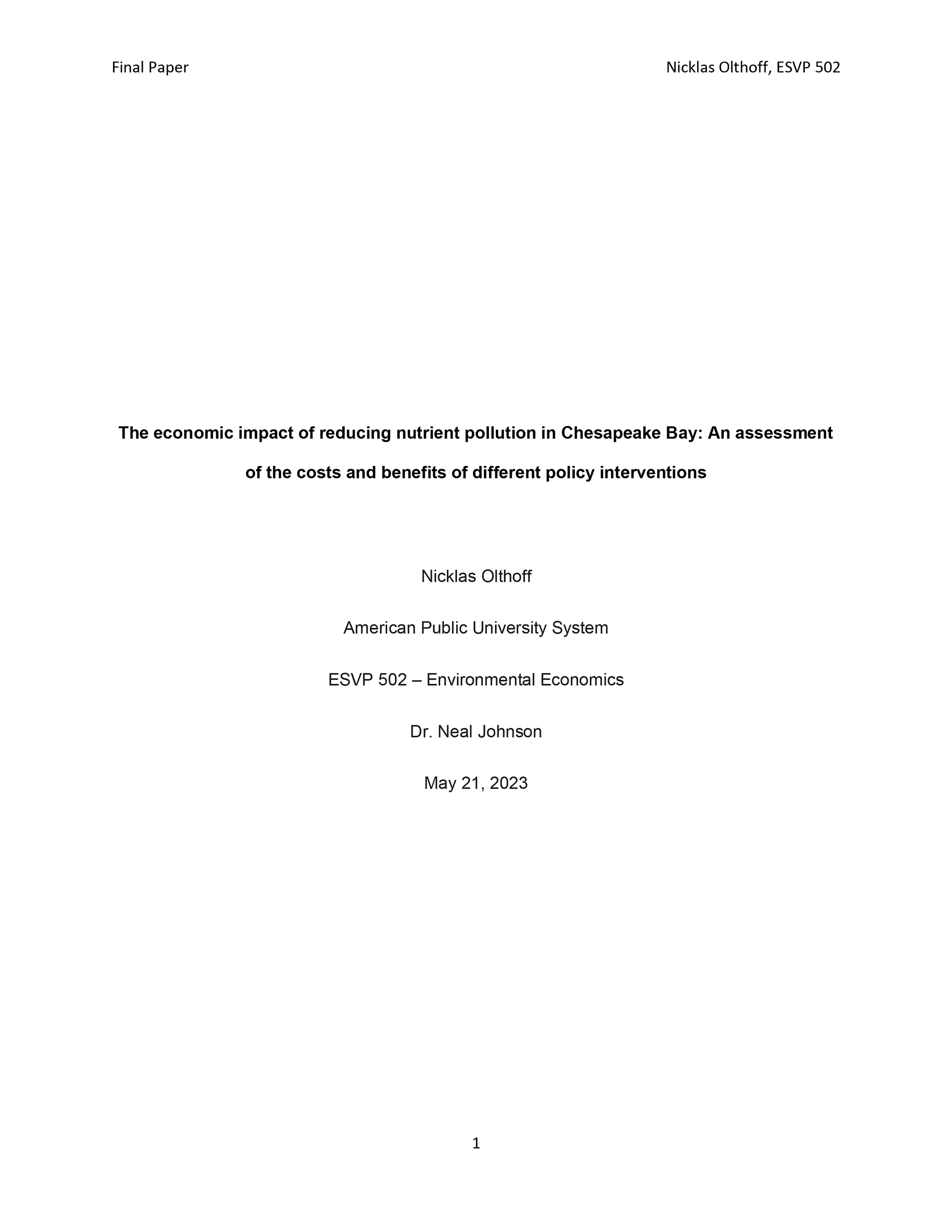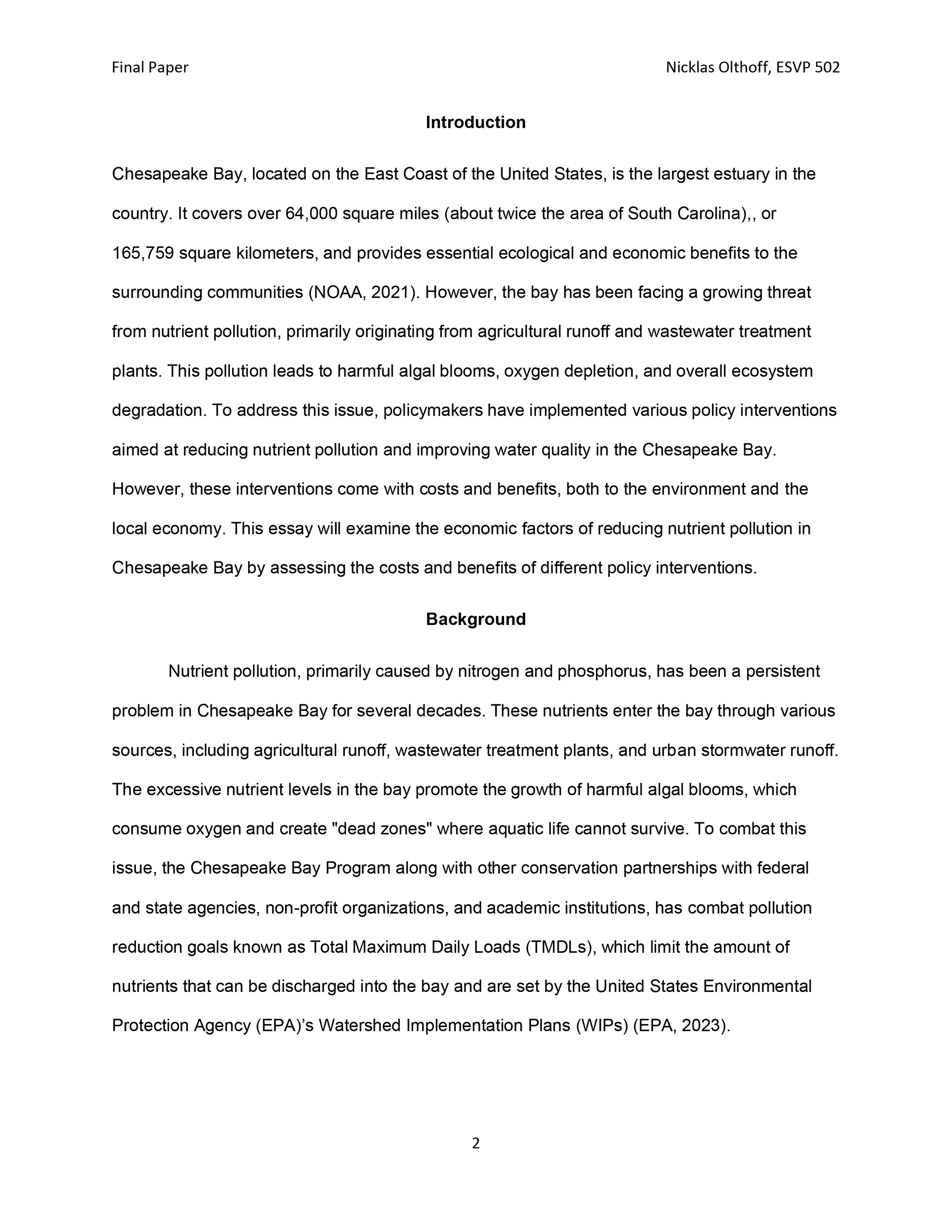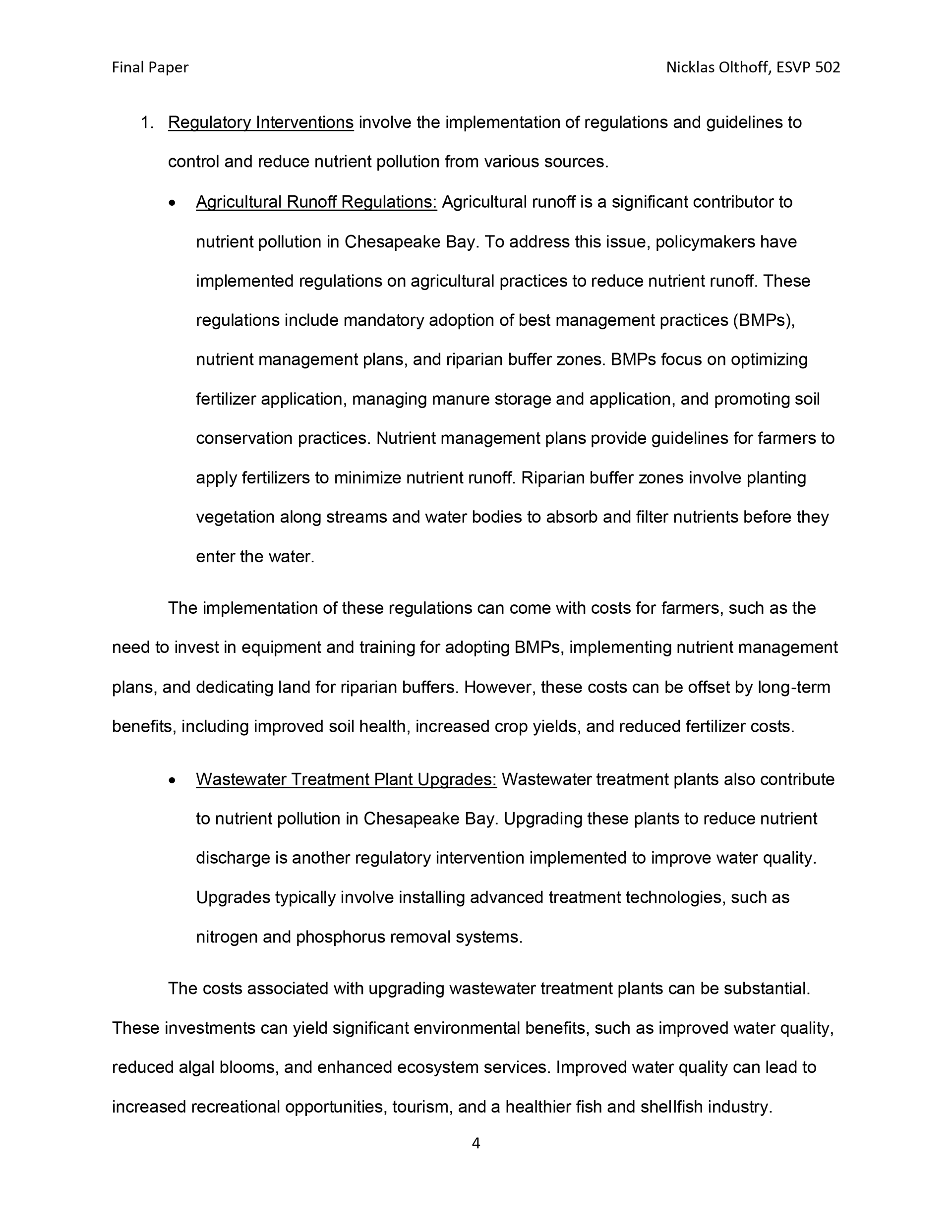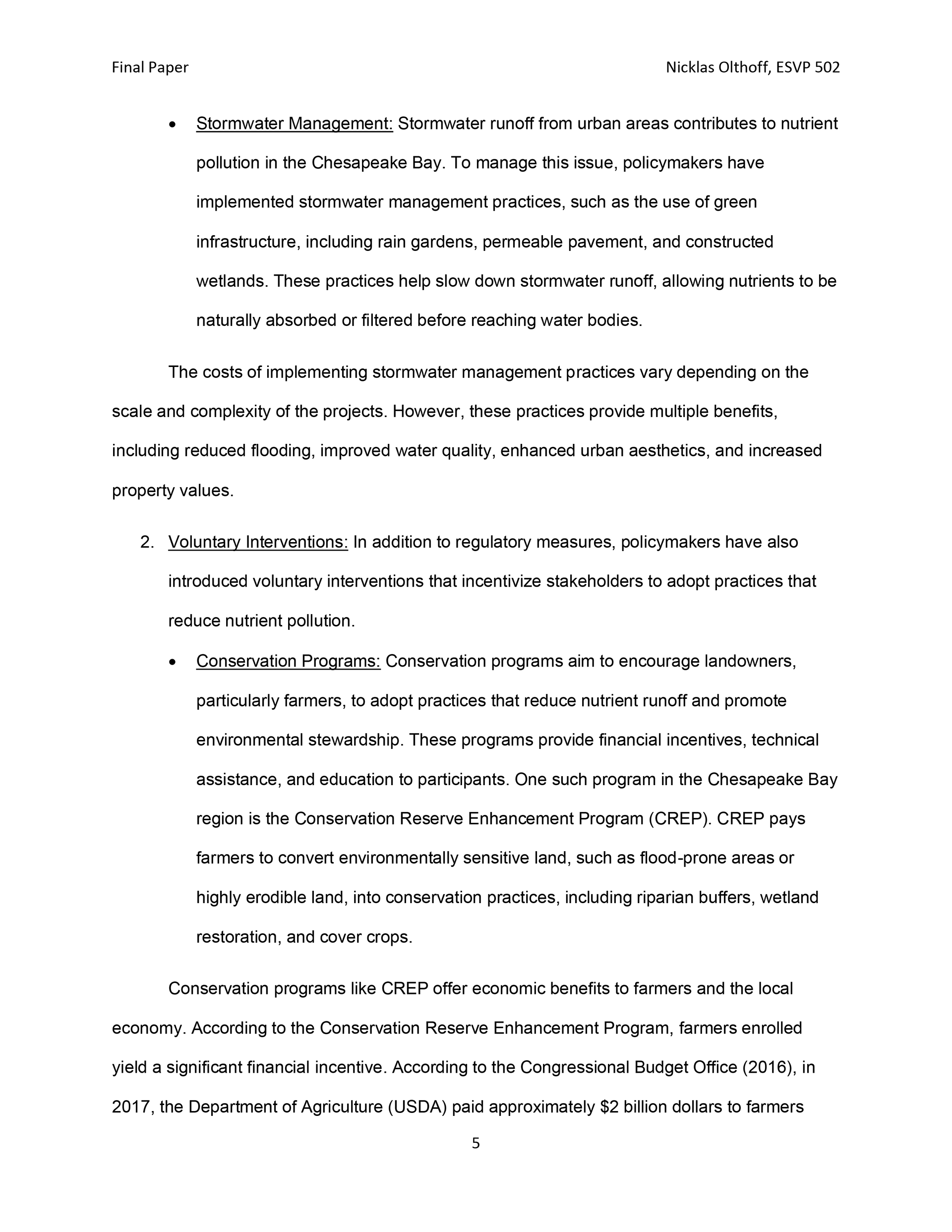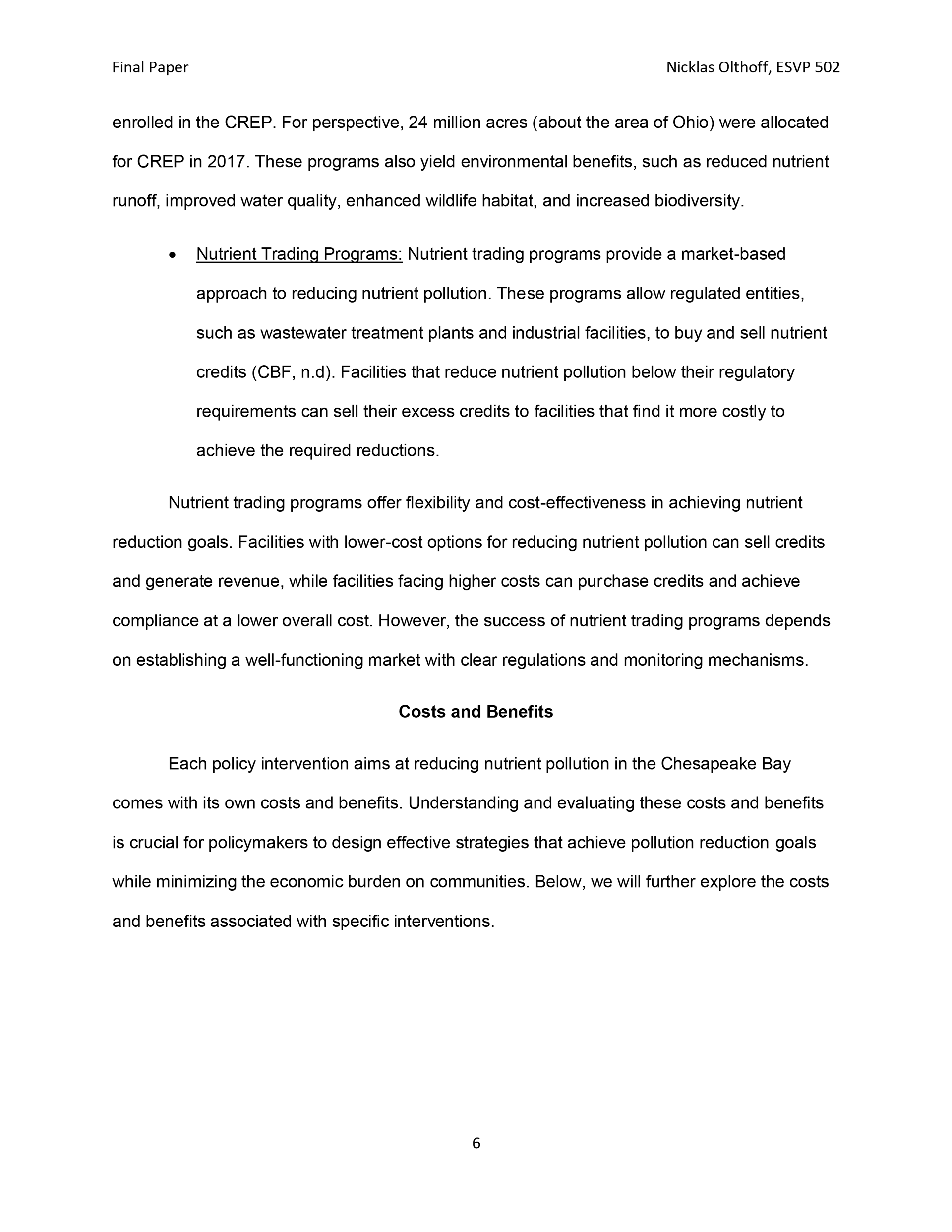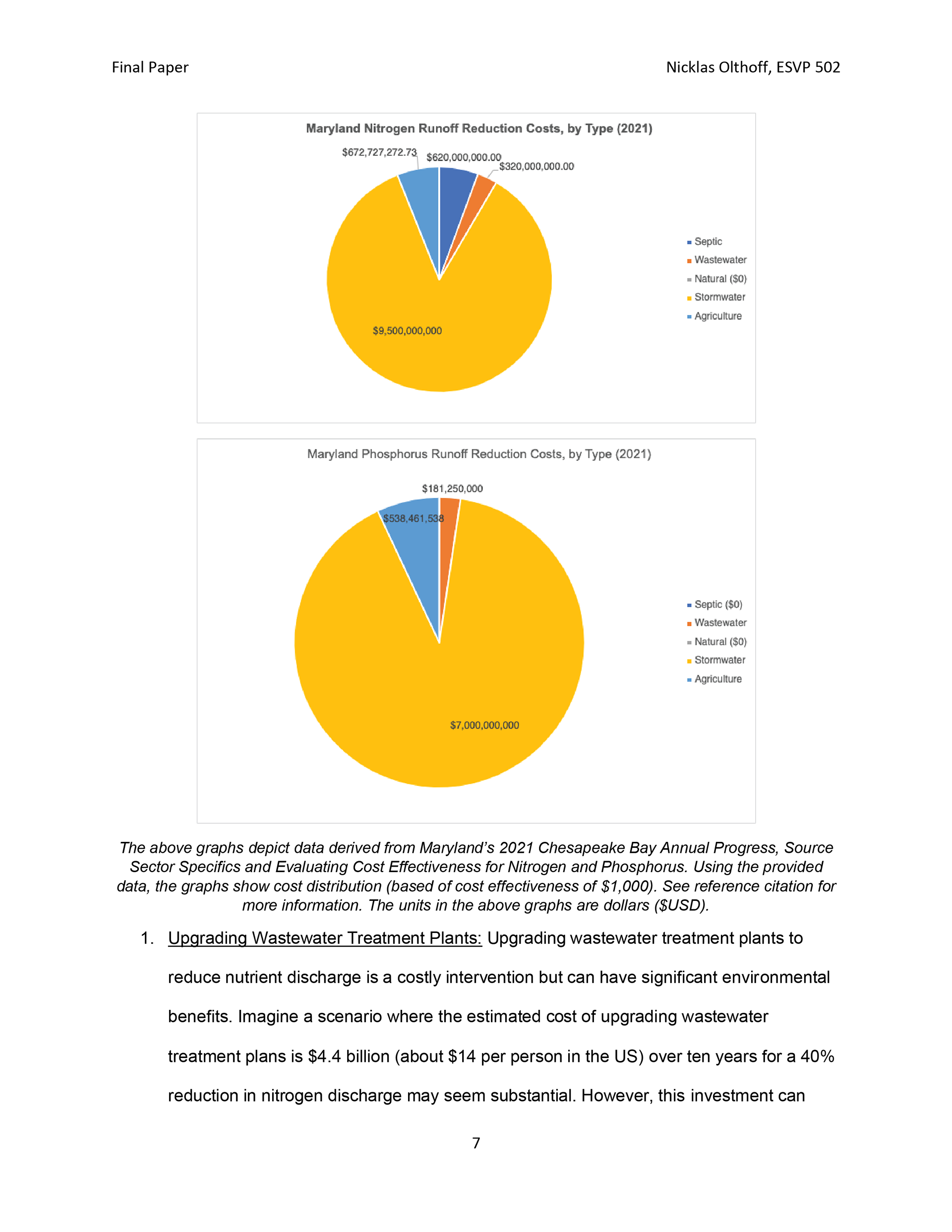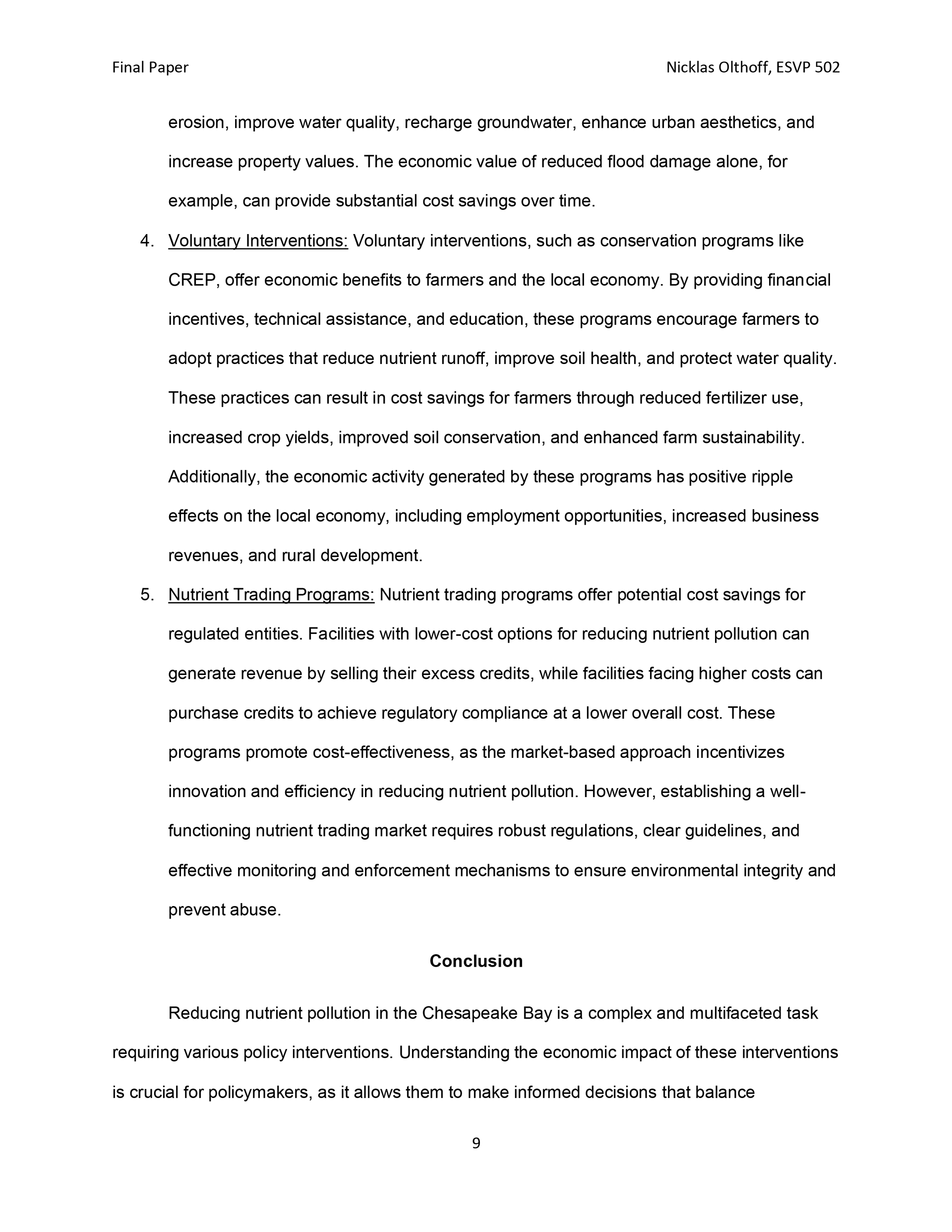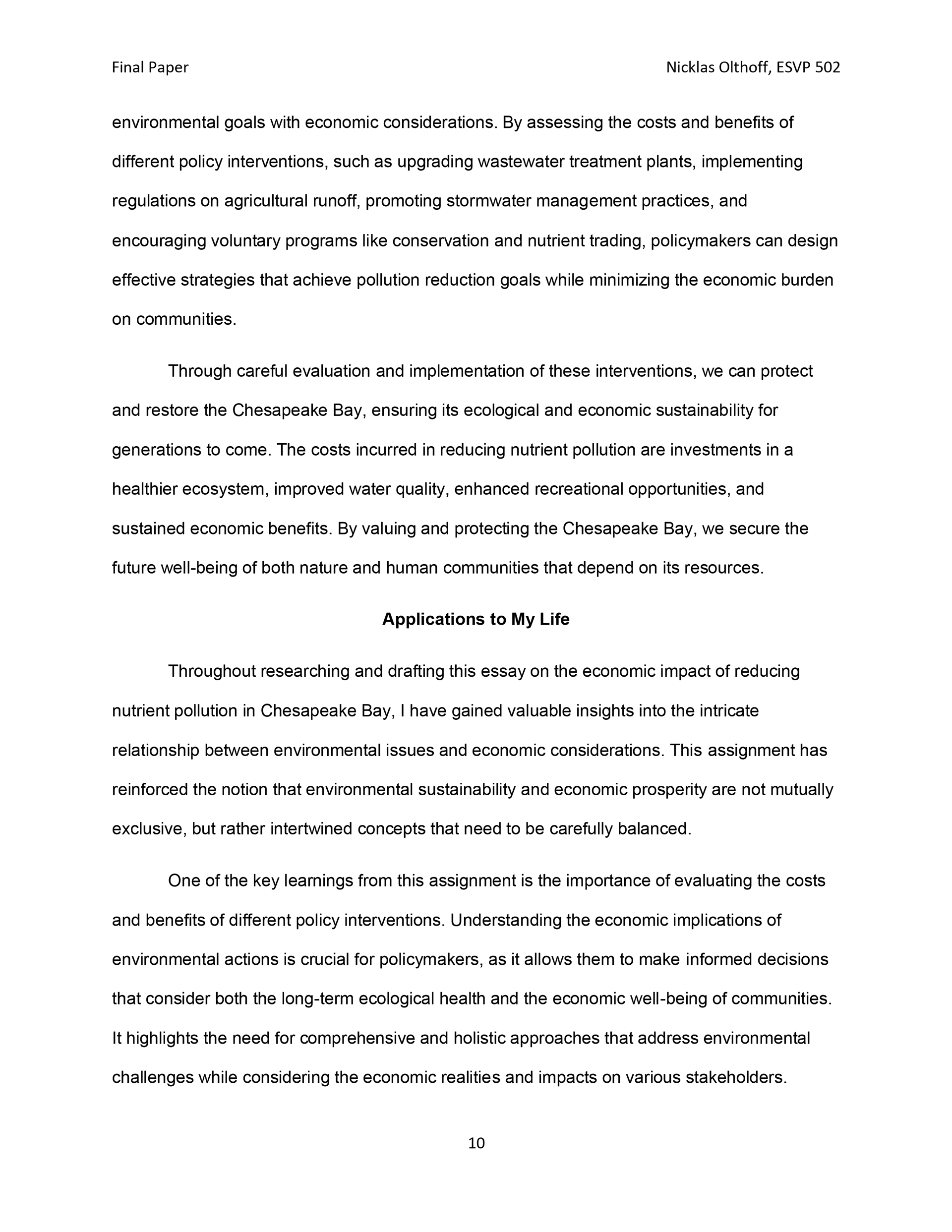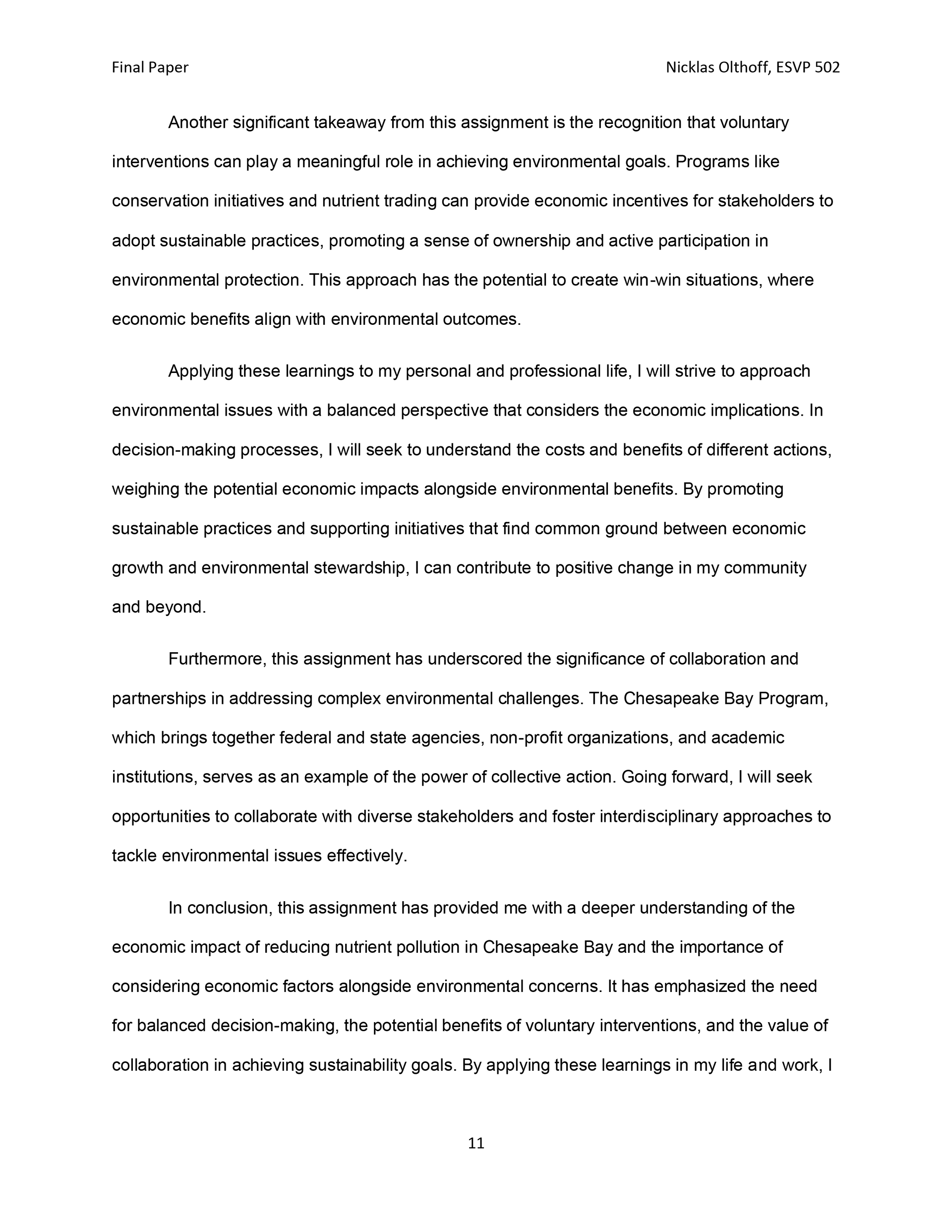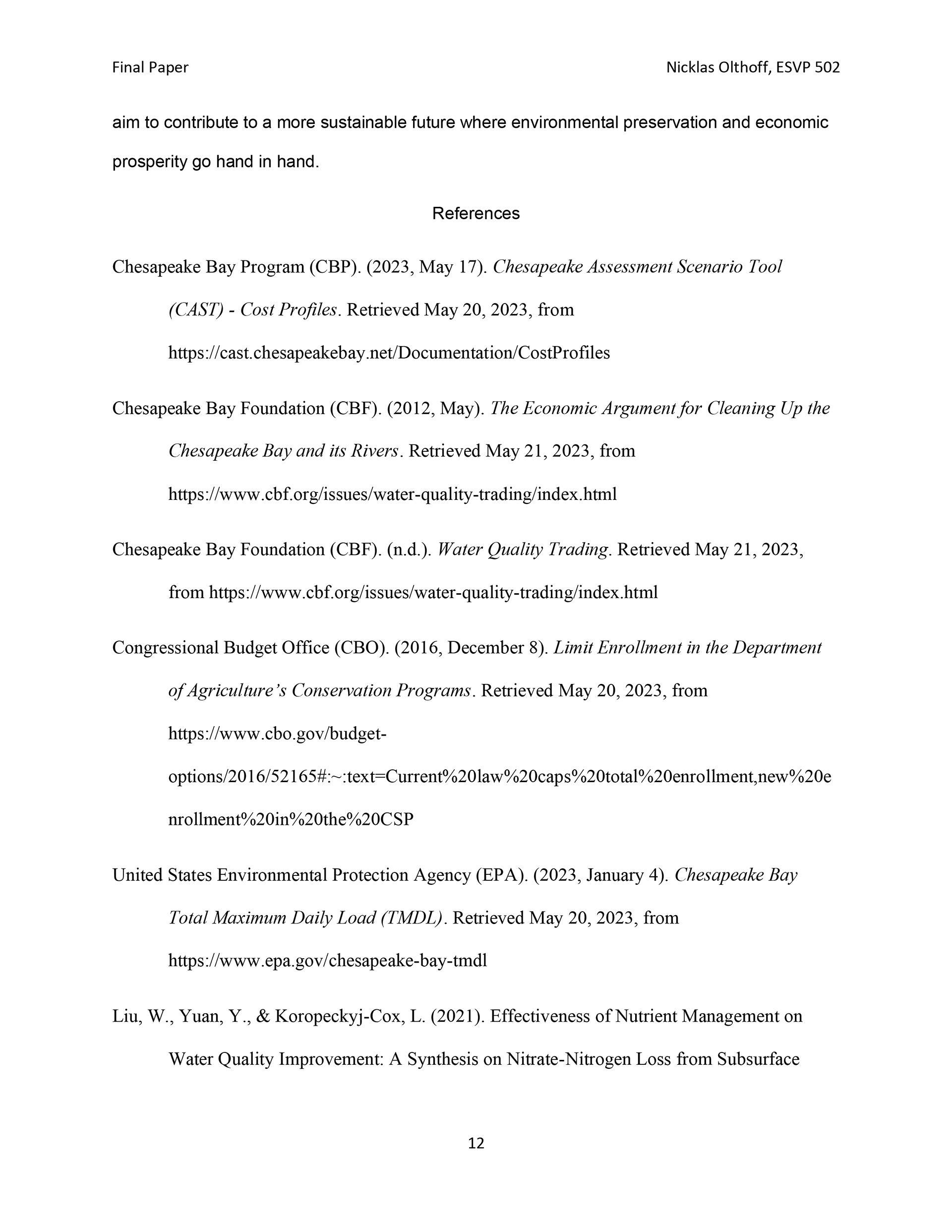The essay below examines the economic impact of reducing nutrient pollution in Chesapeake Bay through various policy interventions. Nutrient pollution, primarily caused by agricultural runoff and wastewater treatment plants, poses a significant threat to the Bay's ecological health. To address this issue, past and current policymakers have implemented regulatory and voluntary interventions.
Regulatory interventions include implementing regulations on agricultural practices, upgrading wastewater treatment plants, and managing stormwater runoff. These interventions come with costs, such as farmers needing to adopt best management practices, upgrade treatment plants, or implement stormwater management practices. However, they also offer long-term benefits, including improved soil health, increased crop yields, enhanced water quality, and reduced flood damage.
Voluntary interventions, such as conservation programs and nutrient trading, incentivize stakeholders to adopt practices that reduce nutrient runoff. These programs provide financial incentives, technical assistance, and education. Conservation programs offer economic benefits to farmers through cost savings, increased crop yields, and improved farm sustainability. Nutrient trading programs promote cost-effectiveness by allowing regulated entities to buy and sell nutrient credits, reducing the overall compliance costs.
Overall, reducing nutrient pollution in Chesapeake Bay requires a careful balance between environmental goals and economic considerations. Understanding the costs and benefits of different interventions is crucial for policymakers to make informed decisions. By implementing these interventions, policymakers can protect and restore the bay's ecological health while also promoting economic prosperity for the surrounding communities.
